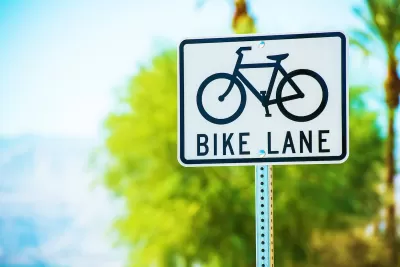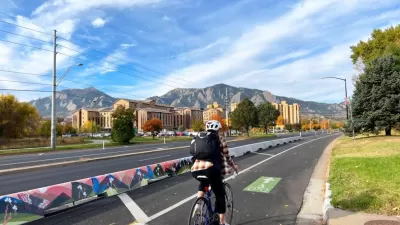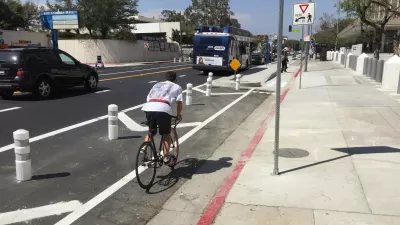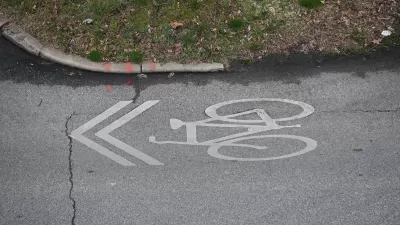Although the one-way bike lane won’t be protected by physical barriers, the proposal is an improvement over the mayor’s initial plan to only include sharrows on the Austin Street project.

After pushback from local bike advocates, Houston Mayor John Whitmire walked back plans to kill a protected bike lane on Heights Boulevard, indicating that the street will now receive a one-way, unprotected bike lane, reports Ryan Nickerson in the Houston Chronicle.
According to the article, “Construction crews had already begun tearing up the old protected bike lane on Monday before the mayor’s office made the change public Thursday in an interview with the Houston Chronicle Editorial Board.” Whitmire said the new design will “improve the mobility and the access of the homeowners and certainly the fire station and it will allow the bike lane to continue.”
Mayor Whitmire has come under fire in recent months for his efforts to dismantle Houston’s bike infrastructure. “When asked whether the new lane will include a physical separation — such as a curb or an armadillo — Whitmire simply said the project would follow the Heights Boulevard model. That lane is unprotected, though it provides a dedicated space for cyclists next to vehicle traffic.” Optimistically, the change could signal that the mayor is listening to the public.
FULL STORY: Pivoting, Whitmire says Austin Street will get a dedicated bike lane, but no physical barrier

Study: Maui’s Plan to Convert Vacation Rentals to Long-Term Housing Could Cause Nearly $1 Billion Economic Loss
The plan would reduce visitor accommodation by 25,% resulting in 1,900 jobs lost.

North Texas Transit Leaders Tout Benefits of TOD for Growing Region
At a summit focused on transit-oriented development, policymakers discussed how North Texas’ expanded light rail system can serve as a tool for economic growth.

Why Should We Subsidize Public Transportation?
Many public transit agencies face financial stress due to rising costs, declining fare revenue, and declining subsidies. Transit advocates must provide a strong business case for increasing public transit funding.

How to Make US Trains Faster
Changes to boarding platforms and a switch to electric trains could improve U.S. passenger rail service without the added cost of high-speed rail.

Columbia’s Revitalized ‘Loop’ Is a Hub for Local Entrepreneurs
A focus on small businesses is helping a commercial corridor in Columbia, Missouri thrive.

Invasive Insect Threatens Minnesota’s Ash Forests
The Emerald Ash Borer is a rapidly spreading invasive pest threatening Minnesota’s ash trees, and homeowners are encouraged to plant diverse replacement species, avoid moving ash firewood, and monitor for signs of infestation.
Urban Design for Planners 1: Software Tools
This six-course series explores essential urban design concepts using open source software and equips planners with the tools they need to participate fully in the urban design process.
Planning for Universal Design
Learn the tools for implementing Universal Design in planning regulations.
City of Santa Clarita
Ascent Environmental
Institute for Housing and Urban Development Studies (IHS)
City of Grandview
Harvard GSD Executive Education
Toledo-Lucas County Plan Commissions
Salt Lake City
NYU Wagner Graduate School of Public Service





























